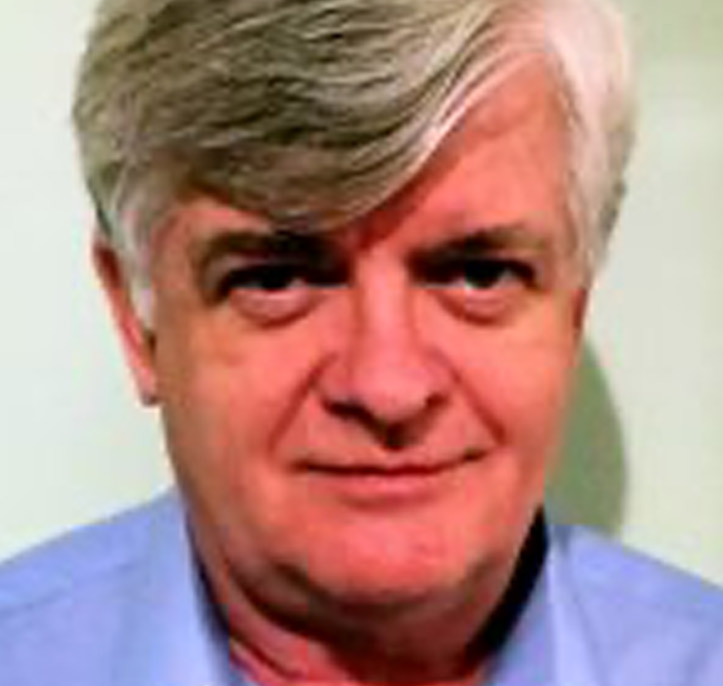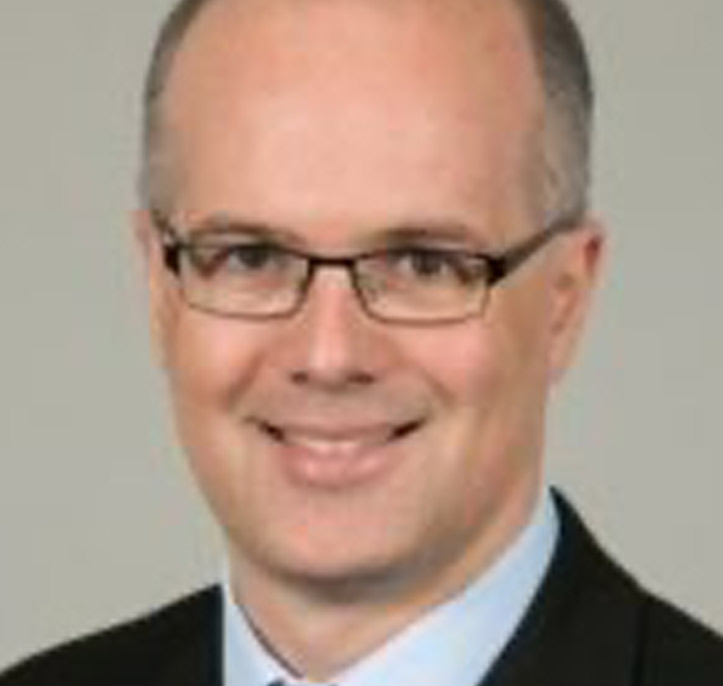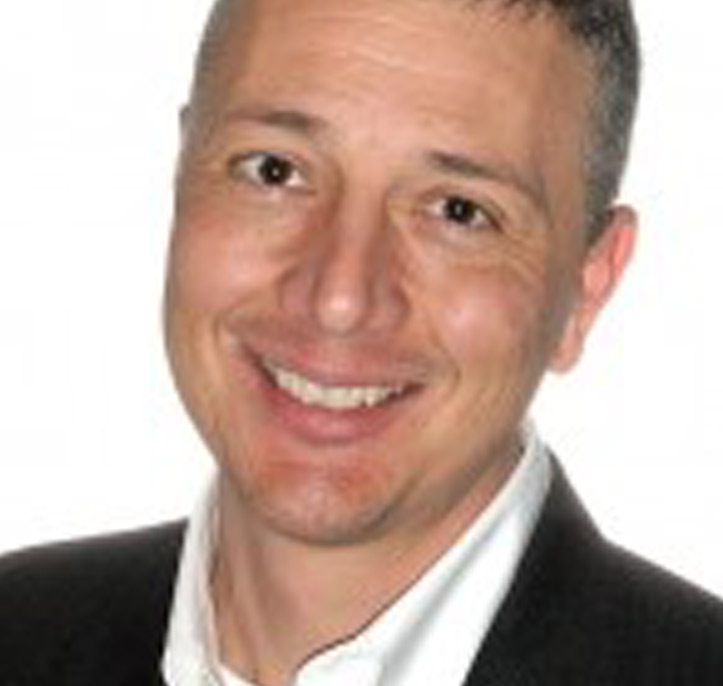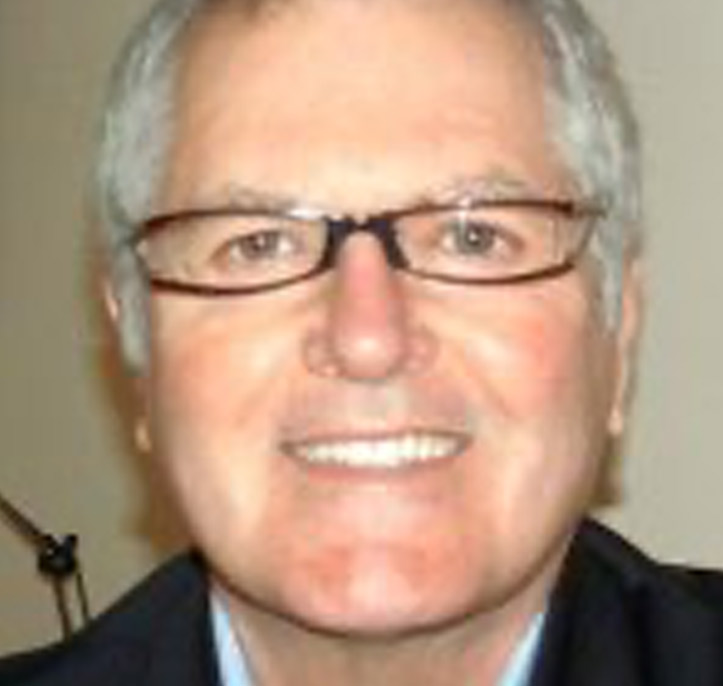2017 SMART Toronto
January 26, 2017
SMART Remediation talks have focused on innovative technologies for remediating contaminated sites, approaches for site characterization, project case studies, regulatory and industry perspectives, and other related topics.

The 19th SMART Remediation conference was held in Toronto on Thursday, January 26th, 2017. Details on the speakers and presentations are provided below.
Speakers

Jamie Evans,
RBC
A Lenders Perspective on Brownfields
- Bio |
- Abstract
- | Presentation
Jamie Evans
JAMES (Jamie) EVANS is Senior Manager of Environmental Risk in the Enterprise Risk Group at RBC in Toronto. Jamie is responsible for environmental risk issues enterprise-wide with an emphasis on environmental credit issues related to property transactions in Canada, US, Europe as well as project finance in the developing world. He and his colleague review over 1200 transactions a year worth in excess of $8 billion dollars in lending opportunities. A geologist by training, Mr. Evans received his B.Sc. in Earth Science from the University of Waterloo and a Master of Engineering from the University of Western Ontario. Prior to working at the bank, where he has been for the past 17 years, he spent 13 years as an environmental consultant with several major environmental consulting firms and has worked on projects in Canada, the US, China and Barbados. He is frequently consulted by regulators, consultants, lawyers, academics, lenders and clients on Brownfield redevelopment, contaminated property financing and environmental risk.
A Lenders Perspective on Brownfields
The presentation will focus on one lender’s perspective on Brownfields as well as the issues associated with the regulatory regime that governs and often hinders their redevelopment. The lender will address banker concerns, myths vs reality, financial mitigation techniques, stigma and trends and observations in the environmental marketplace.

Marc McAree,
Willms & Shier Environmental Lawyers LLP
Making Out the Environmental Due Diligence Defence at Trial
- Bio |
- Abstract
- | Presentation
Marc McAree
Marc assists clients to manage environmental risks and liabilities while limiting clients’ reputational risk. Marc brings significant environmental law expertise to: contaminated land/brownfields clean ups, environmental-aspects of transactions, environmental insurance, all manner of environmental compliance, environmental approval and order appeals, and defence of environmental prosecutions and environmental civil actions. Marc is recognized for his excellence in advocating for clients in environmental civil litigation at all levels of Ontario Courts, defence of clients against environmental regulatory prosecutions, and appearances before Ontario’s Environmental Review Tribunal and other administrative decision-makers on appeals and at hearings. Marc has particular experience prosecuting and defending contaminated land claims and nuisance impacts including odour, noise and light, and also in defending civil actions brought against environmental consultants. Marc is named in the 2021 Lexpert™®/American Lawyer Guide To The Leading 500 Lawyers in Canada. Marc was peer selected and named the Best Lawyers’® 2019 Environmental Lawyer of the Year (Toronto). He is peer selected annually for inclusion in The Best Lawyers in Canada© for environmental law. Marc is ranked “Most Frequently Recommended” by The Canadian Legal Lexpert® directory and ranked “AV® Preeminent™” by peers in Martindale-Hubbell. He is ranked as a Global Leader in Who’s Who Legal Environment and ranked as a National Leader in Who’s Who Legal Canada Environment. Marc is called to the bar in Ontario and British Columbia. He obtained a joint Bachelor of Laws/Masters in Environmental Studies at York University. Willms & Shier Environmental Lawyers LLP is named “Law Firm of the Year” for Environmental Law in the Best Lawyers in Canada, 2021 Edition!
Making Out the Environmental Due Diligence Defence at Trial
Environmental prosecutions in jurisdictions across Canada can result where the Crown alleges a violation of an environmental statute or regulation. Upon conviction, charges can lead to fines and/or jail terms. These are known as quasi-criminal offences. The federal government, provincial and territorial governments and municipalities lay charges under a host of environmental laws. On March 15, 2016, the Court released its decision in R v ControlChem Canada Ltd. The company was charged with five environmental offences under two provincial statutes. The charges arose from the independent actions of the company’s employee. Contrary to the company’s environmental management system, the employee drained the liquid contents of totes to an outdoor storm sewer catch basin at the company’s facility. The Court found that the discharge of liquid caused the nearby creek to turn milky white and acidic, thereby impairing the creek. Did the Court find that the company met the environmental due diligence defence and should be exonerated, or did the Court convict? Environmental due diligence cases highlight the need for corporations, their directors and officers, senior management and employees to implement an integral environmental systems approach to ensure that foreseeable and preventable environmental events and harm do not occur. Many corporations rely on their environmental advisors to provide incisive and practical advice to keep the company, its management and employees out of environmental trouble.

Eric Hood,
Golder Associates
Eric Hood
Eric Hood is a professional engineer with 22 years of experience focused on the evaluation, design and implementation of remediation strategies for brownfield and former industrial sites, including six years of applied research experience evaluating in situ groundwater remediation technologies for chlorinated volatile organic contaminants. He has extensive expertise in site assessment, including geochemical monitoring programs, risk assessments, hydrogeological studies, groundwater modelling, data management systems, natural attenuation assessment, and vapour intrusion assessments. His project experience includes the remediation of complex contaminated sites using a wide range of in situ and ex situ technologies, the implementation of due diligence programs to support real estate transactions, expert advice in support of litigation, the implementation of risk management measures, and the development of mitigation solutions for vapour intrusion problems.
Soil Gas Mitigation Systems – An Emerging Practice
The field of soil gas mitigation is an emerging practice in Canada. There is increasing public awareness of the potential risks from inhalation and/or explosion of volatile chemical compounds and naturally occurring gases such as radon and methane gas. Consequently, mitigation of soil gas intrusion into buildings or enclosed spaces is increasingly required or considered as a pre-emptive strategy at many sites. For new building construction there is a range of possible mitigation solutions, which often involve sub-slab measures where passive or active venting and/or barrier systems are installed. New materials such as aerated floors provide for more efficient venting and options for using wind turbine or low-powered fans. For existing buildings there is also a range of possible mitigation solutions, with one common approach of using the existing granular layer beneath the sub-slab as a venting layer as part of a sub-slab depressurization system. Less common are measures such as building pressurization or ventilation, which may offer advantages for some sites. This presentation focus on six key points to consider for sub-slab venting systems in new and existing buildings. Key points presented include: 1) Establishing Project Objectives and Performance Goals, 2) Selected the Venting System Type, 3) System Design and Optimization, 4) Construction Testing and Inspection, 5) System Commissioning and 6) Ongoing Operation and Maintenance. A discussion on each key point along with practical examples is provided. The presentation concludes with a case study which highlights combined new build and retrofit sub-slab venting system from start to finish.

Joel van Popta,
-30- Forensic Engineering
Using Stable Isotopes in a Multiple-Lines-of-Evidence Approach to Evaluating Sources and Degradation of Trichloroethylene
- Bio |
- Abstract
- | Presentation
Joel van Popta
Mr. van Popta is a consultant with -30- Forensic Engineering, and has been practicing in Environmental Site Assessment and Remediation since 2004. He holds a M.Sc. degree in Contaminant Hydrogeology from the University of Waterloo, and a B.Sc. degree in Earth Science from McMaster University. Mr. van Popta has designed and implemented numerous contaminated site assessment and remediation programs for a range of contaminants, including petroleum hydrocarbons, chlorinated solvents, polycyclic aromatic hydrocarbons, polychlorinated biphenyls, and metals. Also, he has experience with insurance claim and litigation support related to contaminant releases and trespass. He also has capability in spills response and management, contaminant nature and origin assessment, and contaminant fate and transport assessment.
Using Stable Isotopes in a Multiple-Lines-of-Evidence Approach to Evaluating Sources and Degradation of Trichloroethylene
Chlorinated solvent impacts to soil and groundwater were documented historically by others at a former industrial property in southwestern Ontario. The remediation of impacts to groundwater using several remediation technologies—vacuum extraction, phytoremediation, oxidation—was ongoing under the direction of another consultant. Due to a legal action brought by the adjacent property owner, Giffin Koerth was retained by the owner of the former industrial property to determine whether chlorinated solvent impacts to groundwater documented at the adjacent property originated from the industrial property or were of different origin. Our investigation focused on using a multiple-lines-of-evidence approach to determine the likelihood of a secondary source of trichloroethylene (TCE) at the neighbouring property. Four lines of evidence were evaluated: 1) The results of analyses of chlorinated volatile organic compounds (c-VOCs) in groundwater, which demonstrated that similar c-VOCs were documented at both the former industrial property and the adjacent off-site property. Larger concentrations of TCE and cis-1,2-dichloroethylene were documented at the former industrial property when compared to concentrations of TCE and cis-1,2-DCE at the adjacent off-site property. 2) The interpreted groundwater flow direction, which demonstrated that dominant shallow groundwater flow was toward the adjacent property. Estimated groundwater flow velocities were within the range of what could be expected considering the travel distance of the plume. 3) The evaluation of the ratio of TCE to its daughter products, which was used to determine likely source areas. The presence or absence of parent compounds and their breakdown products can provide evidence for source area identification. Parent-compound to daughter-product concentration ratios of chlorinated ethenes are frequently stable within source zones, but will temporally decrease as a result of natural attenuation along the groundwater flow path. Abrupt increases in parent-compound to daughter-product concentration ratios indicate a contribution from additional sources of chlorinated ethenes, which affects the concentration of a particular parent compound. 4) The results of the analyses of carbon stable isotopes in selected samples of TCE from groundwater samples obtained from both properties, which indicated that it was unlikely that a source of TCE impacts to groundwater was present on the off-site property. δ13C values from TCE in samples from the off-site property were consistent with what would be expected if TCE had degraded along the groundwater flow path. Our investigation also evaluated the degradation of the principal contaminant components through the use of stable isotopes. TCE in groundwater from locations farther down-gradient of the source areas may be expected to show increasing enrichment of 13C and increasing δ13C values in TCE, consistent with the increasing degradation of TCE to other c-VOCs. Studies have documented that TCE molecules become enriched in the heavier 13C isotope as degradation occurs along a flow path in anaerobic environments. This pattern can be masked or altered in situations where active remediation has degraded the parent compound TCE by chemical oxidation or reductive dechlorination.

Pete Craig,
Geo-Solutions
Passive (Aggressive) Barriers for Plume Remediation
- Bio |
- Abstract
- | Presentation
Pete Craig
Pete Craig is an environmental remediation specialist and professional chemist (BC PChem), with over 15 years of professional experience with some of North America’s leading environmental consultants. Pete is Regional Manager for Canada West at Canada Geo-Solutions, where he directs environmental remediation and waste disposal. Pete earned his B.Sc. in Chemistry from the University of California Berkeley in 1996 and his M.Sc. in Environmental Engineering from Stanford in 1998. He has worked on a diverse array of environmental remediation projects, ranging from the injection of microscale zero valent iron to dredging, dredge material processing, chemical oxidation, fractured rock excavation, in situ solidification/stabilization and waste encapsulation.
Passive (Aggressive) Barriers for Plume Remediation
In the past 20 years, zero-valent-iron-based permeable reactive barriers have evolved an experimental technology to being accepted, standard practice for a variety of groundwater contaminants. Now, new research, field experience and market developments have driven down costs and expanded applicability – from organic-loaded bio-barriers that treat out mobile metals, nitrate and perchlorate, to nonaqueous-phase liquid (NAPL)–absorbent barriers used to control creosote and coal tar contaminants at wood-treating sites and former manufactured gas plants. At the same time, effective monopolies on shallow single pass trenching techniques have been broken, depth records using bio-polymer trenching have fallen, and new techniques, such as soil-mixing, have been demonstrated as a means to very refresh reactive materials or spot-treat “gaps” in existing walls. Site owners and consultants dealing with long-term groundwater issues –on their own sites or coming in from up-gradient – need to be aware of recent operating experience, construction alternatives, and critical factors for success. “Passive” treatment has become far more aggressive than ever anticipated. This presentation includes an overview of reactive barrier practice, design guidance, and an apples-to-apples comparison of installation methods, costs and constraints, as well as case studies for mine seepage, permeable absorbent (PAB) NAPL barriers, reworking chlorinated iron walls and deep drain infrastructure installation using liquid shoring methods.

Drew Baird,
FRx Inc
DPT Jet Injection for Rapid ZVI Delivery in Low-Permeability Zones: Key Results 18 Months after Full-Scale Injection
- Bio |
- Abstract
- | Presentation
Drew Baird
Drew has over 16 years’ experience in remediation design and implementation, project and team management, field support services, and environmental consulting. He is currently Senior Geologist at FRx, where he leads the company’s business development efforts and provides technical support on soil and groundwater remediation projects to clients in the US and Canada. Prior to joining FRx, Drew was the East Region Manager at REGENESIS, where he was responsible for managing sales and technical support associated with the company’s remediation products in the southeastern US. He also led a team of 5 staff professionals.
DPT Jet Injection for Rapid ZVI Delivery in Low-Permeability Zones: Key Results 18 Months after Full-Scale Injection
While the deployment of innovative technologies is often presented along with encouraging but preliminary treatment results, longer-term remedial performance does not receive as much attention. We have previously disclosed a novel, patent-pending injection technique for rapid emplacement of remediation amendments in unconsolidated low-permeability soil using custom direct-push technology (DPT) tooling and advanced, high pressure, jet injection methodologies. The performance of DPT jet injection was most recently demonstrated during full-scale treatment of a chlorinated solvent source zone at a site in Denmark, where 49 tons of micro-scale zero valent iron (mZVI) blended with sand was injected into a clay till target treatment zone. This project includes extensive post-injection characterization and up to 60 months of performance monitoring. Post-injection distribution of mZVI was documented with detailed geologic logging and magnetic susceptibility measurements of 79 soil borings comprising 1,000 meters core. The resulting dense dataset supports the conclusion that DPT jet injection can consistently create subhorizontal mZVI zones with a radius of injection of at least 3 meters. The findings of this work indicate that DPT jet injection is capable of achieving rapid, controlled emplacement of amendments in clay till, thus representing a substantial improvement in performance over conventional injection methods. Performance monitoring has focused on contaminant destruction within and mass flux out of the treatment zone. Groundwater data indicate that trichloroethene mass discharge from the source area decreased post-injection by 71% after 12 months and 86% after 18 months. The in situ destruction of VOCs and ongoing reactivity of the mZVI has been documented with membrane interface probe (MIP) methods and conventional soil sampling during two post-injection monitoring events. Electrical conductivity measured by MIP have proven useful in identifying mZVI zones. Decreases in chlorinated solvents are co-located with many of these reactive zones, and the total estimated chlorinated solvent mass in soil decreased by 75% in 6 months and 84% in 18 months. The project demonstrates that penetrative distribution of reactive ZVI can effectively and quickly treat high-mass chlorinated solvent source areas in challenging, low-permeability formations.

John Archibald,
Tersus Environmental
Ex Situ Treatments of Aqueous Film-Forming Foam Impacted Water
- Bio |
John Archibald
As a professional engineer, John brings 30 years of engineering management and international experience in positions both in North America and overseas. Having worked for a very large American conglomerate as a senior vice president for a number of years, he has effectively and aggressively managed large business units and led their productive growth and profitability. His experience includes start up situations and opening overseas offices and manufacturing facilities. John has worked with numerous small technology firms launching their initiatives into the marketplace and has been regularly involved in the transfer and licensing of technologies as part of his activities. John is a partner at Tersus Environmental LLC, a progressive environmental remediation technology services firm and is involved in the remediation strategies for numerous sites with numerous contaminants. He brings a wealth of knowledge to the remediation of groundwater and soils. John is the PFASs practice leader at Tersus.
Ex Situ Treatments of Aqueous Film-Forming Foam Impacted Water

Sandra Dworatzek,
SiREM
Bioremediation Approaches and Tools for Anaerobic Benzene Remediation
- Bio |
- Abstract
- | Presentation
Sandra Dworatzek
Ms. Dworatzek is a Senior Manager of SiREM, a division of Geosyntec Consultants. SiREM maintains state-of-the-art treatability, molecular testing and microbial culture development facilities, and currently oversees treatability studies as well as the maintenance and culturing of KB-1® and KB-1® Plus, dehalorespiring microbial cultures that have been widely used in field demonstrations to improve the rate and extent of bioremediation of chlorinated solvents in groundwater (e.g., tetrachloroethene (PCE) and trichloroethene (TCE) dechlorination to ethene). She provides technical oversight for field application of KB-1® and KB-1® Plus and for the development of new bioaugmentation cultures. Ms. Dworatzek is an environmental microbiologist with advanced technical experience in laboratory treatability studies. Over the past 23 years she has conducted and overseen numerous bench-scale studies evaluating aerobic and anaerobic bioremediation, zero valent iron and chemical oxidation technologies for enhanced in situ remediation in groundwater. She has specific technical experience in the design of laboratory treatability studies, the scale up of growth of an anaerobic microbial culture for bioaugmentation laboratory and field pilot tests.
Bioremediation Approaches and Tools for Anaerobic Benzene Remediation
BTEX compounds and other aromatic hydrocarbon compounds typically degrade faster under aerobic conditions than in anaerobic systems. Hydrocarbon contaminated aquifers are often anaerobic meaning that aerobic bioremediation is not always feasible and anaerobic approaches may be required. To meet this need, anaerobic enrichment cultures capable of complete degradation of benzene, toluene and xylene have been developed at the University of Toronto. These cultures have recently been characterized and key organisms involved in the process have been identified. Furthermore, anaerobic degradation of benzene and other aromatic hydrocarbons can be enhanced through the injection of (non-oxygen) electron acceptors such as commercially available sulfate solutions. SiREM, the University of Toronto and Federated Cooperatives Limited are currently engaged in a three-year Genome Canada funded project to move anaerobic benzene degradation from the lab to the field. The objectives of the project include scale-up of an anaerobic benzene bioaugmentation culture to field application volumes, demonstrating its effectiveness for bioaugmentation in laboratory treatability studies and ultimately testing the culture in field pilot tests. The culture is currently being assessed for bioaugmentation using microcosms constructed with materials from contaminated hydrocarbon field sites. Information provided from this testing will include inoculum density requirements, degradation rates and the range of geochemical conditions for optimal performance of the process which will be used to design upcoming field pilot trials. Molecular tools to track key microbes and functional genes are also being developed. This presentation will focus on the scale up and performance of the culture in laboratory treatability studies and discuss lessons learned to be applied to upcoming field applications.

Bruce Tunnicliffe,
Vertex Environmental Inc.
Permeable Reactive Barriers for Petroleum Hydrocarbons Compounds (PHCs)
- Bio |
- Abstract
- | Presentation
Bruce Tunnicliffe
Mr. Tunnicliffe is President of Vertex Environmental Inc., and is an Environmental Engineer with years of experience designing and implementing remediation of chlorinated solvents and petroleum hydrocarbons. Having worked on many hundreds of in-situ projects, Mr. Tunnicliffe has extensive experience on innovated assessment tools and in-situ remediation techniques. Mr. Tunnicliffe holds a Master’s degree from the University of Waterloo, has authored many publications, and has presented at numerous conferences.
Permeable Reactive Barriers for Petroleum Hydrocarbons Compounds (PHCs)
Managing dissolved contamination along property boundaries or adjacent to sensitive receptors such as residential properties or streams has long been an area of focus for the environmental industry. Risk Control Measures are often required in conjunction with risk assessment or remediation. In the 1990s the permeable reactive barrier (PRB) was pioneered – an underground permeable “wall” which is a barrier to contaminants but allows the natural flow of groundwater to continue through the subsurface wall. The initial PRB used zero valent iron (ZVI), was termed the “Iron Wall”, and was very effective and widely applied for the treatment of chlorinated volatile organic compounds (cVOCs). Unfortunately the Iron Wall is ineffective for petroleum hydrocarbons (PHCs). For more than 20 years many attempts have been made at creating a PRB for the treatment of PHCs, but until recently each technique has had serious limitations. The purpose of this talk is to showcase a new in-situ Granular Activated Carbon (GAC) based technology which has been successfully used to treat PHCs (and cVOCs) along property boundaries. The technology is referred to as a “Trap and Treat” concept. Previously the use of GAC in the subsurface has been limited due to the limited adsorptive capacity of the GAC. However, a new technology (to Canada) allows for both the adsorption and the treatment of the dissolved PHCs. Thus passive PRBs can be installed to allow for PHC plume capture and treatment over a long period of time. This talk will present the “Trap and Treat” technology and describe how the technology can be applied along property boundaries, adjacent to streams, or along other sensitive receptors. A case study will also be provided. Additionally, other emerging PHC PRB approaches will be showcased, compared and contrasted to the use of the Trap and Treat approach. The talk will conclude with general recommendations on installation techniques for PRBs for PHC treatment.